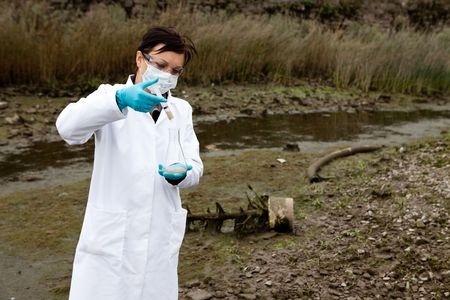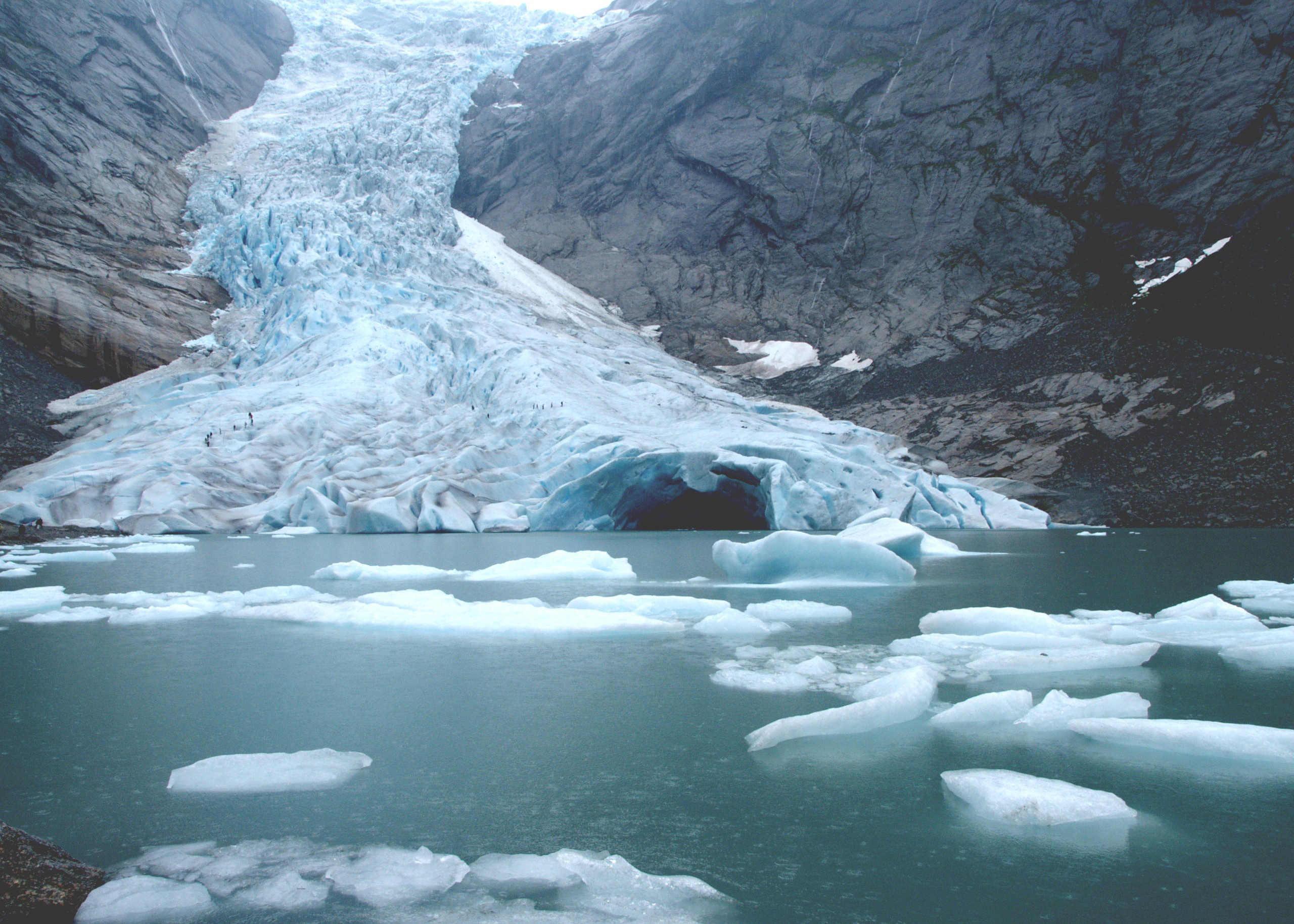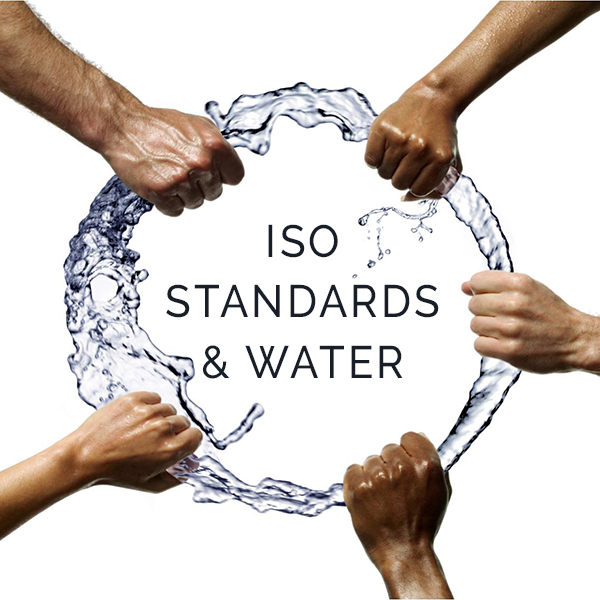by Ashleigh Cunningham – Wednesday, 16 August 2017
“Water is life. Water is health. Water is dignity. Water is a human right” – UN Secretary-General Ban Ki-Moon
Water is an international commodity and essential for life. It is at the centre of creating a sustainable future – energy production, agriculture and industrial processes, food production, sanitation and health are all pillars of human existence.
Read on to discover how ISO plays a role in Sustainable Water Management.
THE GLOBAL ISSUE
As most people are aware, 97.5% of the world’s water is salt water, leaving only 2.5% as fresh water. Just over 63% of this fresh water is locked in polar ice caps and glaciers and only 0.5% is accessible through lakes, rivers, aquifers, groundwater and man-made storage in reservoirs. This limited supply is left for agricultural, industrial and personal use, all of which generate wastewater and pollution if improperly managed. Pollution affects the quality of water and means that only 0.007% of the earth’s water is, in fact, safe for consumption.
Water Supply and Quality
The availability of water differs greatly in various parts of the world. At this point in time, 1 in every 10 people have access to clean drinking water and 1 in 3 people lack access to a toilet. Out of the 7 billion people living on earth, 783 million people have limited access to clean water and 2.5 billion people are without access to adequate sanitation.
The lack of clean water and sanitation leads to a massive spread of diseases and causes child deaths, malnutrition and impacts economic growth. This situation is generally encountered by developing nations in Sub-Saharan Africa, South-East Asia and Latin America. Individuals in these communities earn less than $1/day and suffer greatly from degraded and/or dangerous living conditions, inability to educate their children and getting enough food to eat. Women and children in these communities walk for up to 3 hours a day to gather water which is invariably contaminated, exposing them to a variety of germs. A child is lost every 19 seconds to water-related illness (approx. 675 000 children per year).

Water insecurity is causing up to 6% GDP loss in some countries.
Improved sanitation and clean drinking water would improve chances for opportunity and freedom, within these communities and economies. By reducing illness and death, there would be an opportunity for growth and development.
The effects on Water, through Pollution, Drought and Climate Change
2 million tons of industrial waste and chemicals, human waste and agricultural waste is dumped into receiving waters, on a daily basis. The UN estimate that wastewater production is about 1,500 km3. “Assuming that 1 litre of wastewater pollutes 8 litres of freshwater, the present burden of pollution may be up to 12,000 km3 worldwide.”
“Water ensures healthy ecosystems, which improve the quantity and quality of freshwater. as well as overall resilience to human-induced and environmentally induced changes.” – sdg6monitoring.org
Climate change exposes us to new risks: dry regions are becoming drier and others are facing extreme flooding. The effects of climate change are often visible in the shift in water availability. Tropical and sub-tropical regions will probably get lower and more erratic rainfall and frequent extreme weather conditions will result in an increase in floods, droughts, mudslides, typhoons and cyclones. Water is, therefore, an important component in managing risks related to famine, disease epidemics, migration, inequalities, political instability and natural disasters.

“Recent estimates suggest that climate change will account for about 20 percent of the increase in global water scarcity.” – UN, Water for People Water for Life
Challenges to the Global Industry
 According to the UN, the water crisis that we face is due to poor water governance and mismanagement of water as a whole. The crisis not only creates a great burden on the lives of the poor communities but is also experienced by the natural environment, “which is groaning under the mountain of waste dumped onto it daily, and from overuse and misuse, with seemingly little care for the future consequences and future generations” – United Nations.
According to the UN, the water crisis that we face is due to poor water governance and mismanagement of water as a whole. The crisis not only creates a great burden on the lives of the poor communities but is also experienced by the natural environment, “which is groaning under the mountain of waste dumped onto it daily, and from overuse and misuse, with seemingly little care for the future consequences and future generations” – United Nations.
Statistically speaking, 70% of the world’s water consumption goes to agriculture and 20% to industrial activity. Up to 30% of water in developed cities is lost to leaks.
It takes 1300L of water to produce just 1kg of wheat and 15 500L to produce 1kg of beef. With an increasing population, meat consumption is expected to double by 2050.
A practical example of industry’s threat to Water supply is in the forestry industry. The industry often sees foreign (opposed to indigenous) plant species being utilised, allowing the forester to yield their product. In some instances, particularly within the paper and pulp industry, the trees demand more water than the region is capable of supplying – this can lead to the drying-up of watercourses. As a result, it has become customary for municipalities to monitor the availability of water and to ensure that land use does not compromise the water in the region.
The Role of Water in Sustainable Futures
Oftentimes, we forget that the water cycle and the life cycle are one. There is an attitudinal and behavioural issue towards Water, which could be changed through education.
It is our responsibility to find more ways to sustainably manage water and our futures. For example, the opportunities for exploiting wastewater as a resource are enormous. Safely managed wastewater is an affordable and sustainable source of water, energy, nutrients and other recoverable materials.
There are a number of organisations – both NGO and Private – who are focused on improving the situation. We have so far mentioned the United Nations and would now like to introduce how ISO Standards play a role in the future of water.
ISO Standards and Water
ISO has over 1200 water-related standards (with even more in the workings), covering a wide variety of issues. These water-related standards benefit the global industry, regulators and water consumers, by providing guidance and practical solutions towards best practice for Sustainable Water Management.
 The following list provides just a handful of water-related topics that ISO works with:
The following list provides just a handful of water-related topics that ISO works with:
- Water Quality
- Agriculture and Irrigation
- Water Footprint
- Hydrometry
- Infrastructure
- Sludge recovery, recycling, treatment and disposal
- Drinking water supply and wastewater systems
- Water reuse
- Piping and valves
Who benefits from water-related ISO Standards?
Industry, regulators and consumers each benefit from ISO’s water-related standards. How, you ask? ISO provides harmonised technology and terminology that guides all stakeholders toward Sustainable Water Management.
Industry: agriculture, manufacturing, construction
Through ISO’s water-related standards, industry sectors are given tools for measuring their use of water, as well as methods to optimise their water use. Further guidance is given towards best practice for treatment and use of wastewater; provision of wastewater services; and, use of water in irrigation.
Regulators: municipalities, inspectors
ISO’s water-related standards set foundations for public policy and address water-related challenges, such as climate change impacts and sanitation. They assist regulators in achieving international and national water management commitments.
Consumers: people and animals
Consumers benefit from industry and regulators making use of ISO standards. They are exposed to improved water quality and supply for drinking, sanitation, cooking or food production and agriculture.
Side-effects of GOOD water practice
It might seem obvious to some but, ultimately, good water practice leads to healthier nations and this leads to healthier economies. It also leads to an improved possibility for a sustainable future.
By having healthy nations, there is an increased performance in terms of productivity. This, of course, leads to improved financial performance and process outcomes, resulting in a growth in customer satisfaction.
A great example can be seen in this video of a Senegalese company who manages the production and distribution of water, to more than 5 million people. The company has improved service delivery and water quality by implementing and integrating a number of ISO Management Systems
Video link: Senegal drinking water increases quality with standards!
Read our post What is ISO? to better understand the benefits of the ISO varios standards.
There is hope!
Decisions we make today will determine our resilience – using the tools at hand and buy-in from leadership, we have the opportunity to shift to a sustainable and resilient future.
We need collaboration and trust amongst stakeholders… Don’t call it sustainability, call it better business.
Key areas that we need to place focus on:
- Agriculture and Food
- Energy
- Urban Water Management
- Long-term Education Programs
- Disaster Risk Management
- Environmental Sustainability
- Adapting to Climate Change
- Water Security
- Resilience
World Water Development Report 2015
With the UN’s decade for Water Quality ending in 2015, the group met to discuss how further progress could be made. The “World Water Development Report 2015” was published, in accordance with the World Water Assessment Programme, providing an indication of what achievements are to be expected by 2050.
Video link: Water for a sustainable world: a vision for 2050
According to their video, the following goals will be achieved by 2050:
- Agro-technology will see less vulnerability through improved irrigation techniques and reliable waste water reuse.
- Development of sustainable Hydropower installations will provide electricity to hundreds of thousands of people in Sub-Saharan Africa and South-East Asia.
- People’s water habits will be vastly changed through education.
- There will be greatly improved scientific and technical knowledge, as well as an increase in sharing of lessons learned and best-practices followed.
- The world’s major transboundary basins and aquifers will be managed in a collaborative manor, amongst multiple areas involved. This will lead to improvements in quality and ecological conditions, as well as improved relations, capacity and benefit sharing, amongst neighbouring countries.
- Access to water, sanitation and hygiene will be improved universally, through mass deployment of urban water infrastructure: waterless sanitation will make use of human excreta to provide energy and eliminate pollution to freshwater resources.
The aim is to create a balance between extracted water and water returned to the eco-system. Maximised reuse will be a major contributor to universal access to water.
Useful links:
- What is ISO? – https://blog.erudio.global/what-is-iso/
- Water and sanitation at the core of sustainable development –
http://www.sdg6monitoring.org/news/at-the-core-of-sustainable-development?rq=water%20and%20sanitation - Water for People –
http://www.un.org/esa/sustdev/publications/WWDR_english_129556e.pdf - Water for Life –
http://www.un.org/esa/sustdev/publications/water_for_life.pdf - ISO and Water –
https://www.iso.org/files/live/sites/isoorg/files/archive/pdf/en/iso_and_water.pdf - Water Changes Everything – https://www.youtube.com/watch?v=BCHhwxvQqxg
- A Water-Secure World for All: The World Bank Water Global Practice – https://www.youtube.com/watch?v=gcnF1LRiMU4&list=PLopq6yGfmFAt3etq_tDU0FryNLOtlco7n7n
Let us know what you and your organisation are doing to create a sustainable future for our world. You can do this by typing a comment in the field below!
Feel free to contact us via email (info@erudio.global) or via one of the social media platforms.
Share this post to your preferred Social Media platform:

